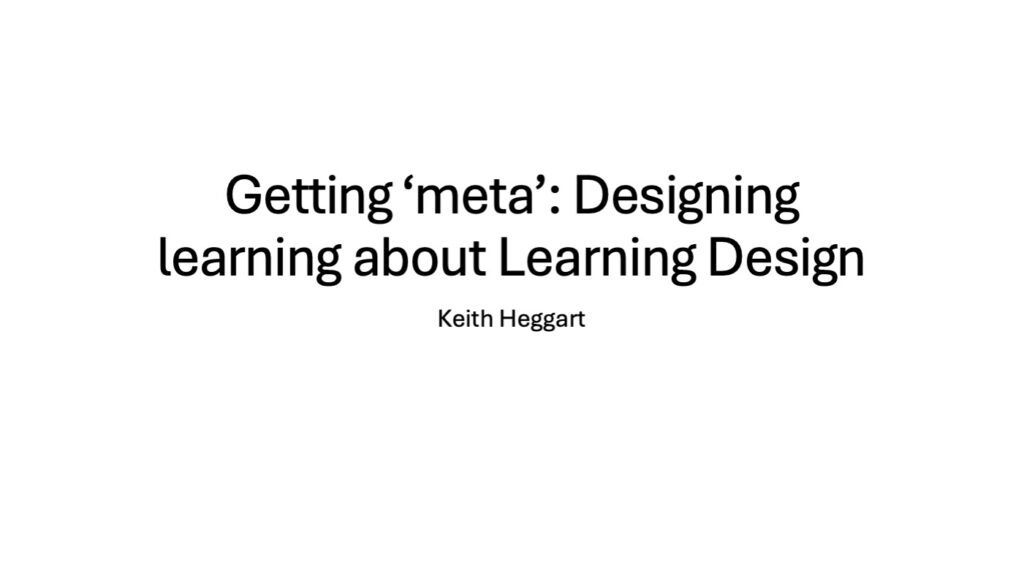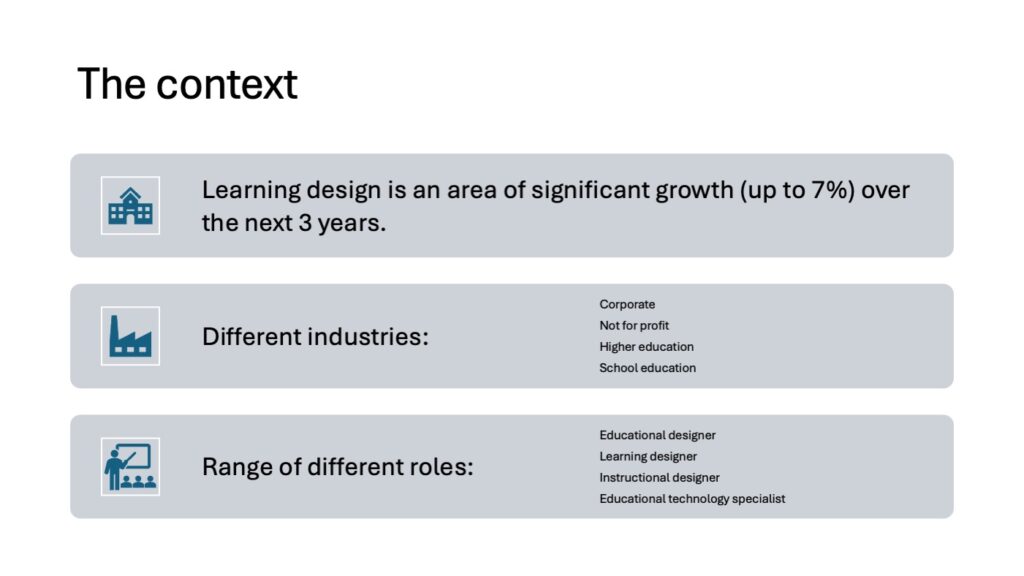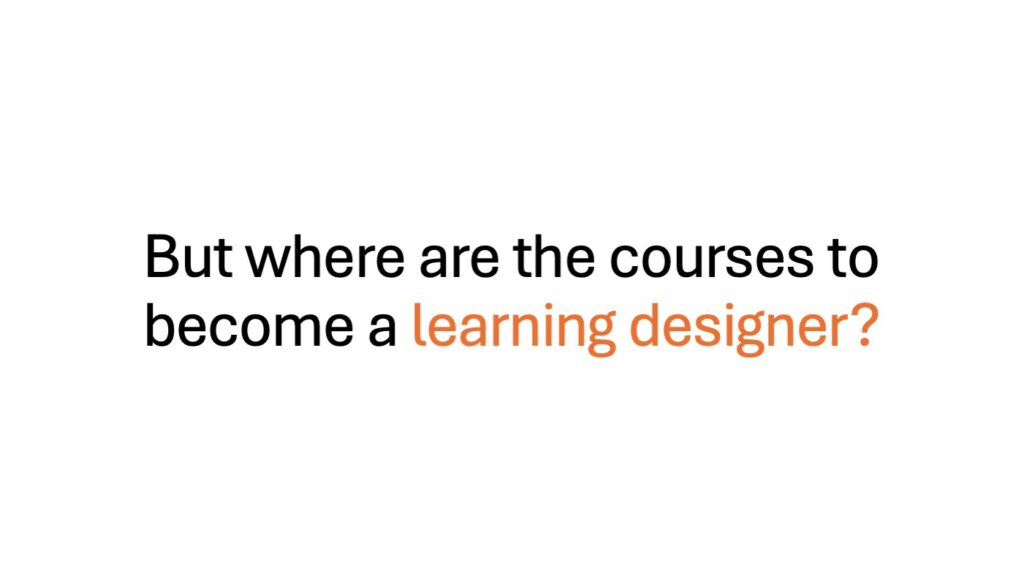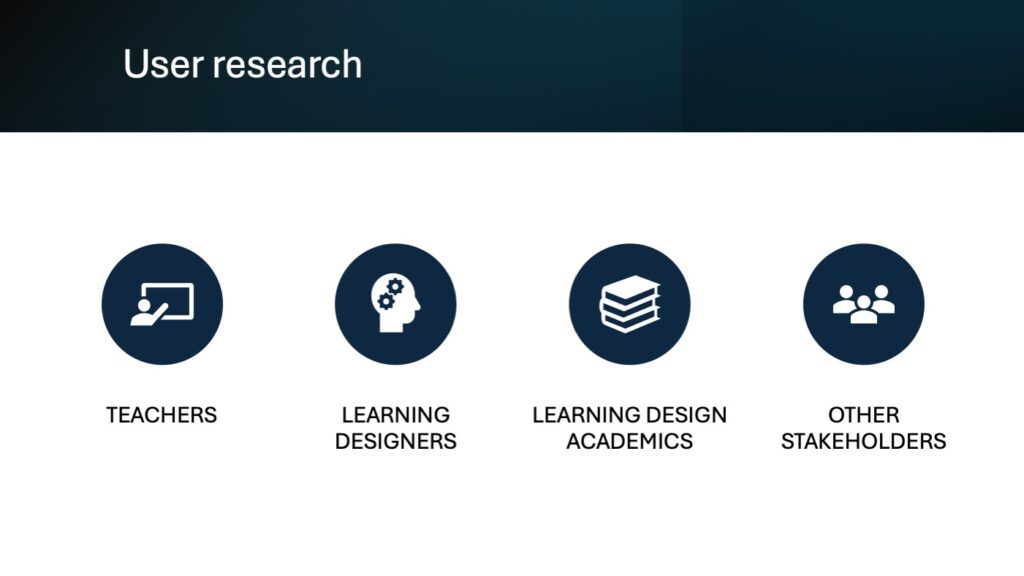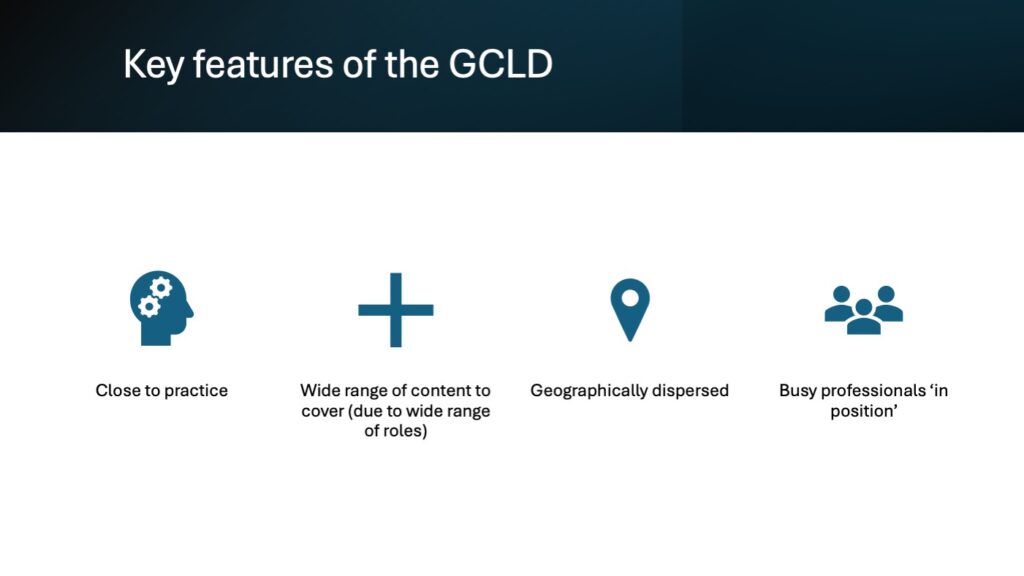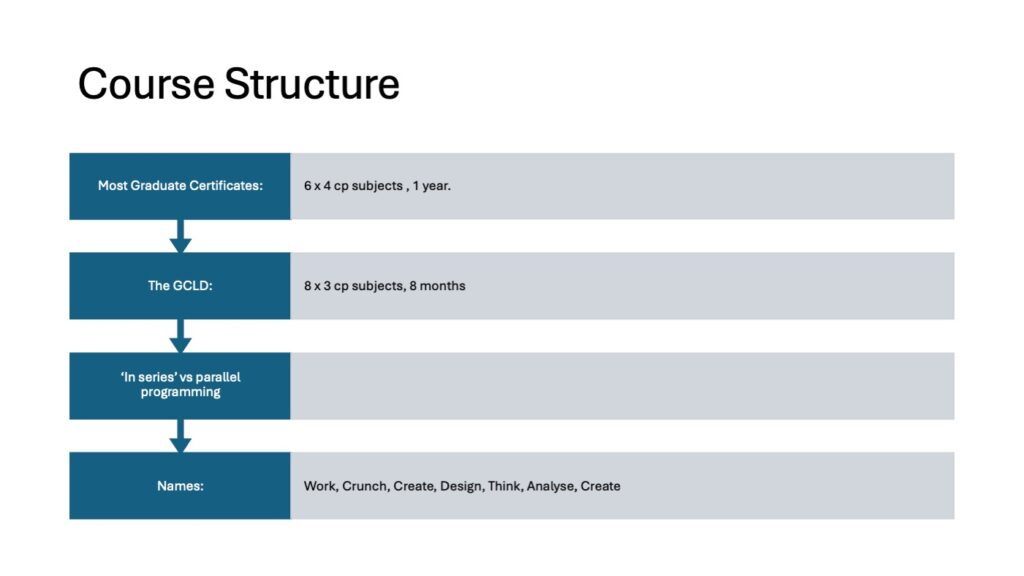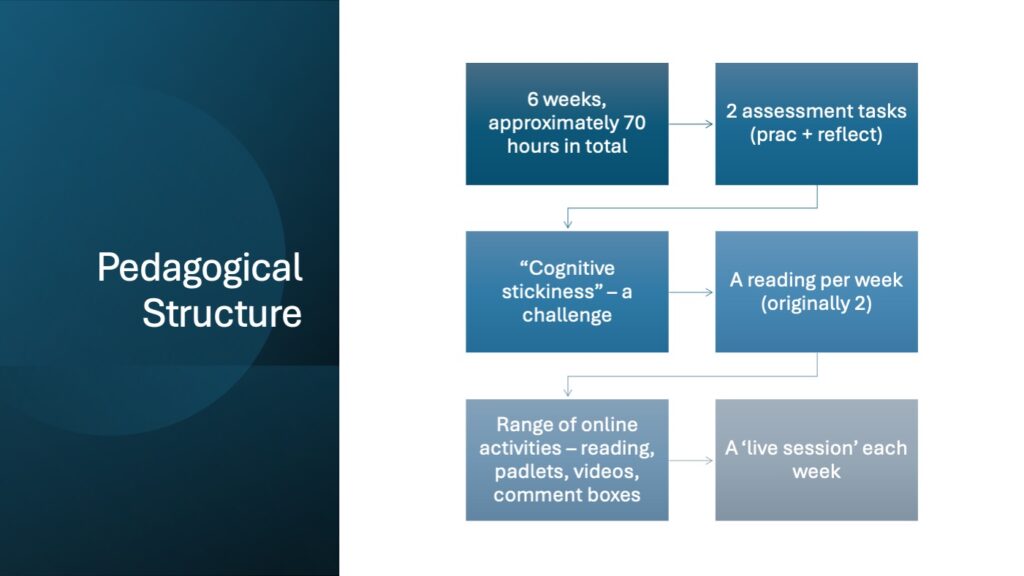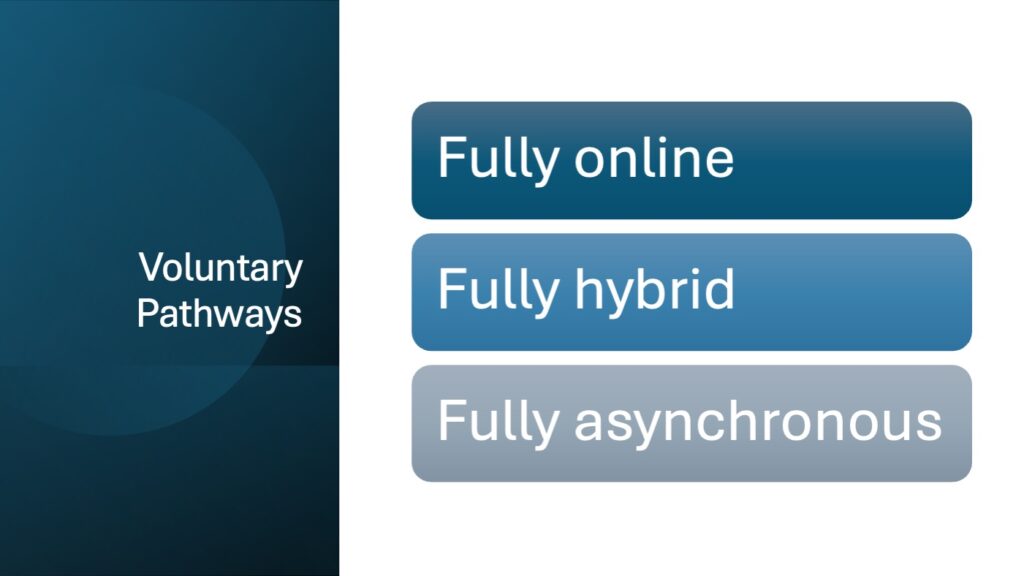In today’s rapidly changing educational landscape, the need for professionals skilled in learning design is growing at an unprecedented pace. According to recent studies, the learning design industry is expected to grow by up to 7% over the next three years, as industries across various sectors recognize the value of well-designed learning experiences. This includes fields as diverse as corporate training, non-profits, higher education, and K-12 school systems.
But where are these professionals coming from? How do we ensure that those responsible for creating impactful learning environments are themselves learning in innovative and effective ways?
This is where the Graduate Certificate in Learning Design (GCLD) comes in.
The Need for Learning Designers
Learning design encompasses a broad range of roles, including:
• Educational designers
• Instructional designers
• Educational technology specialists
Each of these roles plays a critical part in crafting learning experiences that are effective, engaging, and aligned with the learners’ needs. However, despite the increasing demand for these roles, the pathways to becoming a learning designer are still developing, which raises important questions about training and development in the field.
User Research: Grounding the Program in Practice
To build a program that addresses this gap, user research was conducted with a range of stakeholders, including teachers, learning designers, academics, and industry professionals. This research aimed to ensure that the GCLD program is both practical and aligned with the needs of professionals who are often already in the workforce.
Key Features of the GCLD Program
The GCLD program stands out in its approach. Unlike traditional academic programs, the GCLD is designed to be close to practice and flexible, catering to geographically dispersed and busy professionals. The content is broad, reflecting the diverse roles that learning designers play, and it is structured to accommodate the busy schedules of working professionals.
The course consists of:
• Six subjects delivered over a year, with a focus on practical, hands-on learning.
• Each subject is designed to encourage active participation, analysis, creation, and reflection.
Pedagogical Structure: Balancing Flexibility with Rigor
Each course within the GCLD follows a six-week structure, involving around 70 hours of learning. With two assessment tasks in each subject, students are challenged to apply their learning in practical ways while also reflecting on their experiences. The program also includes live sessions to create a sense of community among participants.
To address the challenge of “cognitive stickiness” (i.e., how to help students retain and apply what they learn), the program includes a range of online activities such as Padlet discussions, video content, and reflection exercises. Additionally, readings and other materials are carefully curated to balance depth with accessibility.
Pathways and Flexibility
Understanding that today’s learners need flexibility, the GCLD program offers multiple pathways:
• Fully online
• Fully hybrid
• Fully asynchronous
This ensures that students can engage with the content in ways that best suit their professional and personal lives.
Work-Integrated Learning: A Key Component
A significant highlight of the GCLD program is its focus on work-integrated learning. Students participate in “In Conversation With…” sessions and Expression Sessions, which provide internship-like experiences, albeit remotely. These opportunities allow students to gain practical insights from industry leaders while applying their learning in real-world contexts.
Conclusion
The GCLD program offers a flexible, practice-oriented pathway for professionals looking to upskill or transition into the field of learning design. By focusing on user research, flexibility, and work-integrated learning, the program equips its graduates with the skills and knowledge needed to design effective, engaging, and meaningful learning experiences across industries.
As the demand for learning designers continues to grow, programs like the GCLD are crucial in ensuring that professionals are well-prepared to meet the challenges of modern education and training.
This post has, in part, been written by ChatGPT
